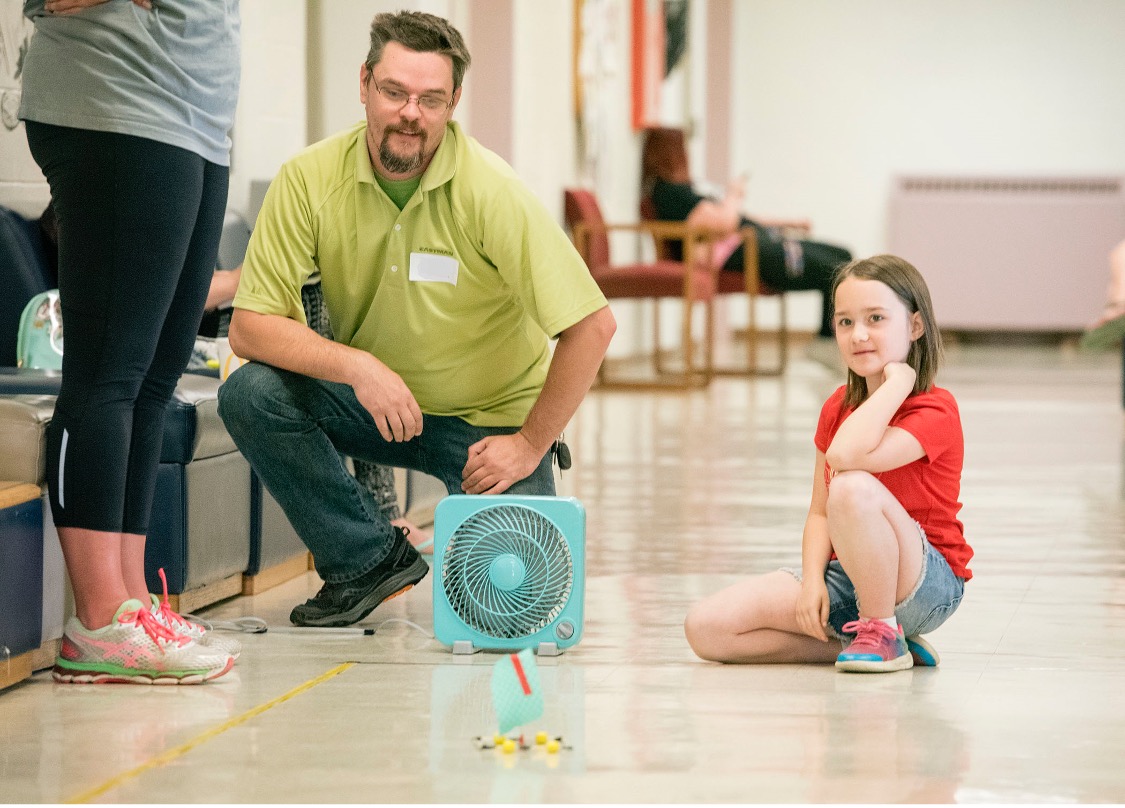Chapter 7: Technology and Engineering
Example project
Title
Sail Cars
Author
Adapted from Sailing into Integration by Laura Robertson, Eric Dunlap, Ryan Nivens, and Kelli Barnett
Grade/Grade Span
Second Grade
Summary
This unit involves an exploration of sail cars and what makes them travel the greatest distances. Students will explore this concept by engaging in the engineering design cycle by designing, creating, and testing their own sail cars against “wind” created by fans. Learners will measure the distances travelled by the cars and compare and contrast the features that allowed them to travel the furthest. Students will then go through the process of redesigning the cars based on their discoveries through comparisons. They will retest their cars and see how their changes impacted distances travelled.
DCI
- Technology and Engineering
Standards
NGSS
2.ETS1: Engineering Design
2) Develop a simple sketch, drawing, or physical model that communicates solutions to others.
4) Compare and contrast solutions to a design problem by using evidence to point out strengths and weaknesses of the design.
2.ETS2: Links Among Engineering, Technology, Science, and Society
1) Use appropriate tools to make observations, record data, and refine design ideas.
Michigan Science Standards
Engineering Design
K-2-ETS1-1 Ask questions, make observations, and gather information about a situation people want to change to define a simple problem that can be solvedthrough the development of a new or improved object or tool.
K-2-ETS1-2 Develop a simple sketch, drawing, or physical model to illustrate how the shape of an object helps it function as needed to solve a given problem.
K-2-ETS1-3 Analyze data from tests of two objects designed to solve the same problem to compare the strengths and weaknesses of how each performs.
5Es
Engage. To begin this unit, the class will watch a video of a land sailing competition followed by a discussion about what they just saw. The teachers will ask open-ended questions about the video that encourage children to reflect on what they saw, share their ideas for how they think the sail cars are able to move, and what features enable them to move the longest possible distance. This video and discussion will generate interest in the sail cars and frame the idea as the unit moves forward.

Explore. To test their thinking about the sail cars, students will move into a large area (cafeteria, hallway, etc.) so they can construct and test their cars. Teachers will put students in pairs to create a sketch of their sail car design before beginning construction. Once they have their design, learners will use the provided materials to make their design come to life. Students will build their sail car and then test them against a fan. They will measure the distance the cars travel and repeat the test two more times, writing the distance travelled on a sticky note to plot on a graph. This activity allows students to experience the key concept in this unit and examine how their thinking translated into the real world.
Explain. During this phase of the unit, students come together for a whole-group discussion. Teachers and students discuss the distances seen on their graph. Teachers will provide information about the graph, teaching them the name of the graph and asking them to make their own line plot in their notebooks. Students will also compare and contrast the cars that were able to travel furthest and discuss the strengths and weaknesses of the different sail cars. They will then go back and re-evaluate their design based on the new information they gained from the whole-group discussion.
Elaborate. Students will be given the same materials they had access to during the Explore phase to redesign and retest their sail cars. Once they have made the changes they want, students will test their sail cars again and record their data in a table. They will also create another graph showing the changes in the distances travelled from their original and second attempt, allowing them to compare how the changes they made affected how far the sail car could travel. Students can apply their new learning and communicate what is happening with formal language.
Evaluate. To assess learning, students will complete a Claim, Evidence, and Reasoning response individually. They will answer questions about the sail cars, describe what made the cars travel the greatest distances. Students will also reflect on their own learning and the designs they created in their science journals. Teachers can look at students’ responses as well as their designs from their sail cars to assess their learning throughout the unit.
Sail Cars with Preschool Children
This project can also be adapted to work with preschool-aged children. The process will be to follow a more basic cycle of inquiry since the work is with younger children. The phases in the cycle will be shorter and more simplified. These phases will be Explore, Create, and Improve. During the Explore phase, the problem will be presented to students to create a sail car that will travel the farthest possible and to build the tallest structure possible to withstand the wind. Once they understand the problem, students will begin the process of designing. They will observe the materials available, draw representations of their thinking, and talk about what they want to create.
During the Create phase, children will bring their ideas to life and test them against the wind from a box fan. Once they have tested their creation, they will go back and Improve their designs based on what happens. Teachers will work with them through this process and scaffold their learning as they make adaptations to their creations. Students will also work with their peers and they work through the rebuilding process. Children will retest their new sail cars and structures and share their findings with their whole class.
